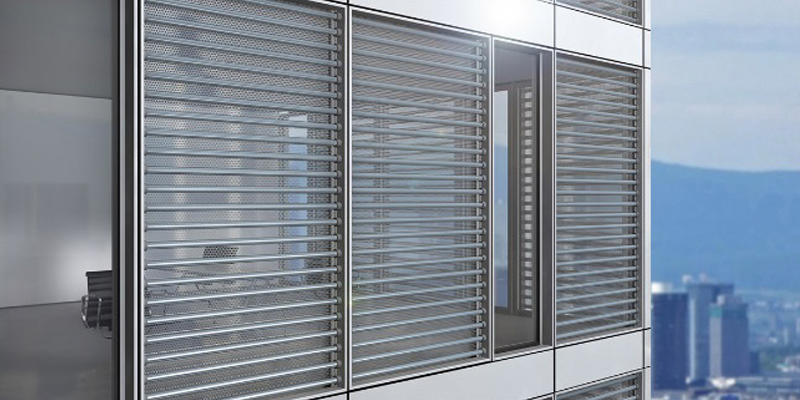Downloads
DOI:
https://doi.org/10.7480/jfde.2018.2.2102Keywords:
facade integrated solar techniques, solar heating, solar cooling, solar collectorsAbstract
There is a clear trend towards the increased contribution of renewable energy at European level, and EU policies are oriented towards that direction. The building sector is no exception and presents an urgent necessity for increasing the share of renewable energy sources (RES) to reduce the impact on the environment.
The aim of this paper is to examine the potential of solar heating and cooling technologies in reducing energy consumption by incorporating solar thermal and PV collectors within the building’s envelope. Although generally envisaged to be integrated in the roof, preferably oriented to the south, this study explores also their potential for integration into the façades.
External climate influences both the demand for space heating and cooling (influenced by temperature) and the potential from solar renewable energy (incident global irradiation). However, a time lag exists since supply and demand peak at different times within the day as well as during the year.
This study assesses the interplay of solar energy supply with heating and cooling energy demand. An analysis is performed over climate data files for five European locations, based on daily weather data. Besides the extent of incident solar irradiation, its seasonal usability is assessed with regard to the thermal demand. The impact of the inclination of solar collector devices is assessed by comparing their placement on a horizontal plane, on the inclination of maximum exposure for each climate, and on vertical planes for the four cardinal directions.
As a conclusion, the utilization of solar energy for different scenarios is assessed and a discussion on the integration of solar thermal and PV collectors over façades is presented, building on the potential of these technologies for developing innovative solutions that could significantly upgrade the buildings’ energy performance in the near future.
How to Cite
Published
Issue
Section
License
Copyright (c) 2018 Peru Elguezabal, Beñat Arregi

This work is licensed under a Creative Commons Attribution 4.0 International License.
Authors or their institutions retain copyright to their publications without restrictions.
References
UNEP - SBCI, United Nation’s Environment Programme’s Sustainable Building and Climate Initiative. (2009). Buildings and Climate Change. Summary for Decision – Makers. Retrieved from http://staging.unep.org/SBCI/pdfs/SBCI-BCCSummary.pdf
European Commission. (2017). Energy Strategy and Energy Union. Secure, competitive, and sustainable energy. Retrieved from https://ec.europa.eu/energy/en/topics/energy-strategy-and-energy-union
Directive 2010/31/EU, (2010), of the European Parliament and of the Council of 19 May 2010 on the energy performance of buildings (recast)
Commission Recommendation (EU) 2016/1318, (2016), of 29 July 2016 on guidelines for the promotion of nearly zero-energy buildings and best practices to ensure that, by 2020, all new buildings are nearly zero-energy buildings.
IEA. (2013). International Energy Agency. Transition to Sustainable Buildings. Strategies and Opportunities to 2050
Stanciu, C. & Stanciu, D. (2014). Optimum tilt angle for flat plate collectors all over the World – A declination dependence formula and comparisons of three solar radiation models. Energy Conversion and Management. Vol. 81 (2014), pp. 133-143
Munari Probst, M.C. & Roecker, C. (editors). (2012). Solar Energy Systems in Architecture – integration criteria and guidelines. IEA SHC Task 41, Subtask A
O’Hegarty, R., Kinnane, O. & McCormack, S. J. (2016). Review and analysis of solar thermal facades. Solar Energy. Vol. 135 (2016), pp. 408-422
Elguezabal, P. et al. (2018). Review of the European Dwelling Stock and its Potential for Retrofit Interventions Using Solar-Assisted Heating and Cooling. Conference proceedings. In REHABEND 2018, Cáceres, Spain. 15-17 May 2018
Meteonorm weather database. Meteotest. Retrieved from http://www.meteonorm.com
Schoenau, G. & Kehrig, R. (1990). Method for calculating degree-days to any base temperature. Energy & Buildings. Vol. 14, Issue 4 (1990), pp. 299–302
Perez, R. et al. (1998). The Development and Verification of the Perez Diffuse Radiation Model. Sandia Report SAND88-7030
IRENA. (2012). International Renewable Energy Agency. Renewable energy technologies. Cost analysis series. Volume 1: Power Sector Issue 4/5. Solar Photovoltaics
IRENA. (2017). International Renewable Energy Agency. Cost and competitiveness indicators. Rooftop solar PV
Winkler Solar. Retrieved from http://www.winklersolar.com (22/03/2018)
Elguezabal P., Garay R. & Martin K. (2017). Experimentation under real performing conditions of a highly integrable unglazed solar collector into a building façade. Energy Procedia. Vol. 122 (2017), pp. 775-780.
University of Stuttgart, IBK2. Retrieved from http://www.uni-stuttgart.de/ibk2/index.php (22/03/2018)
Cao, S., Hasan, & A., Sirén, K. (2013). On-site energy matching indices for buildings with energy conversion, storage and hybrid grid connections. Energy & Buildings, Vol. 64 (2013), pp. 423-438.
